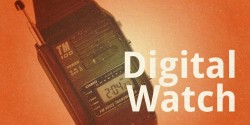As if it wasn’t already obvious, online audio of all types is growing by leaps and bounds. In fact, 44% of all Americans over age 12 listen every week.
It’s most popular with young people, though also quickly gaining traction with everyone under age 55. This is according to the the 2015 edition of their Infinite Dial survey of American listening habits, released last week by Edison Research and Triton Digital.
The key number for all broadcasters to pay attention to is that 77% of listeners aged 12 to 24 listen to internet radio in a month, and 73% of them use a smartphone, compared to 61% who use a desktop or laptop computer. While broadcast radio holds onto its dominance in the car, 59% of 12 to 24 year-olds have listened to internet radio in the car.
When it comes to choosing a service the runaway winner is Pandora, which 54% of that age group listened to in the last month, with Spotify and iTunes Radio coming in a distant second and third, with 23% and 20%, respectively. iHeartRadio comes in an even more distant fourth, with only 14% of listeners 12 to 24 saying they listened in the last month.
On the one hand iTunes Radio’s popularity is impressive given that the service is barely 18 months old. On the other hand, the fact that it’s included on every iPhone makes it an easily accessed default for a lot of users.
As a whole these numbers are a bracing wake-up call for all terrestrial broadcasters. Public radio has bolstered itself a little better with its investments in podcasting, which also saw gains in listenership this year. Yet not all public or non-commercial broadcasters have leveraged podcasting equally, and commercial radio has barely made a dent.
What we’re watching is a whole generation of listeners skipping broadcast radio altogether, not just over the air, but on their smartphones and computers as well. Not to put too fine of a point on it, Pandora is eating broadcasters’ lunch… and dinner, and dessert. Teens’ and young adults’ preference for Pandora, Spotify and iTunes Radio is an unavoidable indicator that they are not interested in the poor to mediocre music programming served up by the vast majority of radio stations, and they’re sure as hell not going to listen to it online when there are simply better choices.
It’s a tough situation for the biggest commercial radio owners, since they’ve spent so much effort gutting their local talent, without cultivating much national talent, choosing instead to grind away with the same basic programming formulas from the turn of the century. Loading up hundreds of barely differentiated stations into a smartphone app and promoting it relentlessly on your broadcast properties doesn’t do much good when the youngest generation of listeners isn’t tuning them in to begin with.
There’s more hope for other broadcasters that are not so laden with debt or handcuffed by outmoded assumptions. Community, college, public and independent commercial stations aren’t going to compete head on with Pandora, but do have an opportunity to capture millennials’ ears online. To do this, they first have to recognize that it’s necessary. Now is that time.
HD Radio Is Not the Global Choice
This week John Anderson published a examination of global digital radio. The most popular format across Europe, now making incursions into Asia, is the DAB standard, not the HD Radio standard used here in the US. John notes that Norway is even planning to end analog broadcasting altogether in 2017 since digital signals now reach 99.5% of the country’s population.
The question is: in five or ten years will the rest of the world be enjoying more advanced (and maybe higher quality) digital radio than we do in the States, where most people don’t enjoy it much at all?
Update on BBC Radio Streams
Finally, I have a follow-up to my mention of listeners upset by changes to the BBC’s online streaming two weeks ago. Writing in the Guardian, Jack Schofield has published a very clear explanation of the situation, along with suggestions of how to best play the Beeb’s new streams, though with an understandable emphasis on listeners in the UK.
The short answer is that most PCs, tablets and smartphones should be able to play them. It’s internet radios, which have their capabilities mostly baked in, that are still in limbo, though Schofield lists a couple of models that might do the trick.



